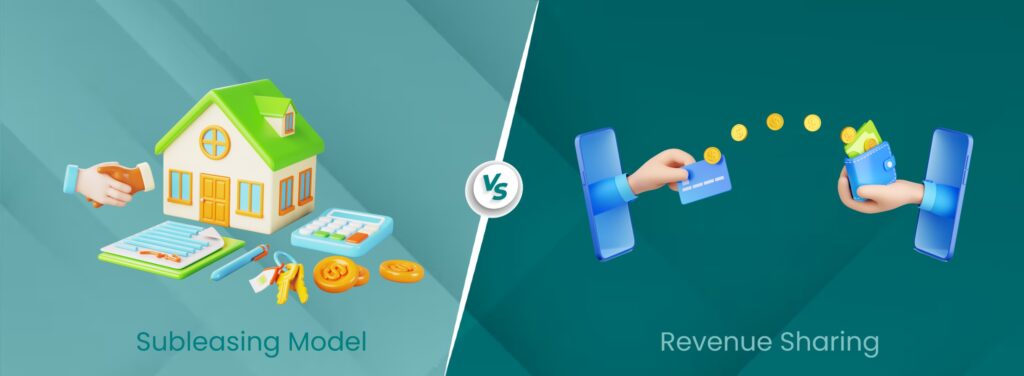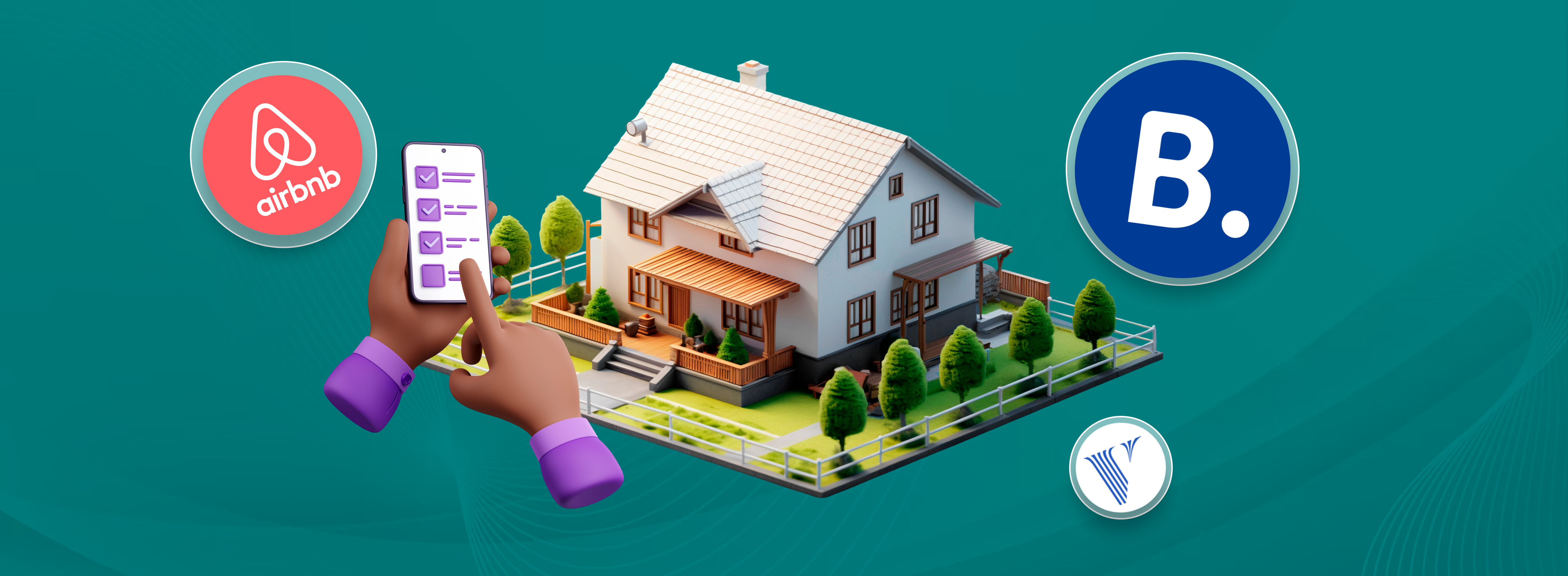Two of the most common models in the holiday home market are subleasing and the traditional holiday home revenue-sharing model. Each has its own set of benefits and challenges, depending on the owner’s desired level of involvement, financial goals, and management style. Here’s a closer look at both:
Table of Contents
ToggleSubleasing Model
How It Works
In the subleasing model, a vacation rental manager or host rents the property from the owner for an extended period, paying a fixed amount of rent to the owner during that time.
The subleaser then converts the property into a holiday home and lists it on popular Online Travel Agencies (OTAs) like Airbnb and Booking.com, with the goal of earning enough rental income to cover the rent and operational costs, while making a profit.
Financials
If the revenue from holiday rentals exceeds the rent paid to the owner plus expenses, the subleaser makes a profit.
For example:
Rent = 100,000 AED
Revenue = 250,000 AED
Expenses = 80,000 AED
Profit = 250,000 – 100,000 – 80,000 = 70,000 AED
This profit goes to the subleaser.
Risk
The subleaser bears all the risk. If the holiday rental income does not cover the rent and expenses, they incur a loss.
Owner’s Role
The owner receives a fixed income from the rent paid by the subleaser and is usually not involved in the day-to-day operations of the property as a holiday home.
Revenue Share Model
How It Works
In this model, a holiday home management company takes care of the day-to-day operations of the vacation rental. They list the property on OTAs, manage bookings, and handle guest services, cleaning, and maintenance.
Rather than paying rent, the company and the owner split the revenue from bookings, based on an agreed-upon percentage.
Though this is the normal case, it’s vital to note that some holiday home companies follow the subleasing model as well.
Example
Total revenue generated in a year = 250,000 AED
The agreed revenue share = 20%
So, the revenue cut for the management company = 20% of 250,000 = 50,000 AED
The revenue of the owner = 250,000 – 50,000 = 200,000 AED
Risk
Both the management company and the owner share the financial outcomes based on the property’s performance.
Owner’s Role
The owner’s involvement is minimal but they receive the pre-agreed portion of the income without managing the property operations.
Key Takeaways
- In the subleasing model, the owner gets a fixed rent, and the rental manager gets any amount that exceeds the fixed rent.
- In the revenue share model, the owner and the management company agree to share the revenue.
Deciding between subleasing and working with a holiday home company mostly comes down to whether you prefer a consistent income with lower risk, or if you’re open to sharing potentially higher profits with less involvement in day-to-day operations. Each model has its benefits, catering to different owner preferences and market situations.
The Role of mr.alfred in Managing Vacation Rentals
Managing vacation rentals can be a daunting task, but with mr.alfred’s vacation rental management software, it’s never been easier.
Our powerful tools, like the channel manager and price management features, help optimise your property listings, synchronise bookings across platforms, and adjust rates to stay competitive.
By streamlining operations and automating key processes, mr.alfred ensures better management, increased bookings, and a seamless guest experience – making your property more efficient and profitable in today’s market. Contact us to learn more.
Related Blogs
How to Maximise Short-Term Rental Income | Top 10 Vacation Rental Sites for Owners | Vacation Rental Cleaning Checklist | How to Make Your Apartment a Vacation Rental | Vacation Rental Management Challenges and Solutions | How Vacation Rentals Can Prepare for 2025 | Vacation Rental Property Management Checklist | Vacation Rental Revenue Management Service | How to Value Your Vacation Rental Property | kitchen essential for vacation rentals | list on multiple rentals | Tips to Manage Multiple Vacation Rentals |




